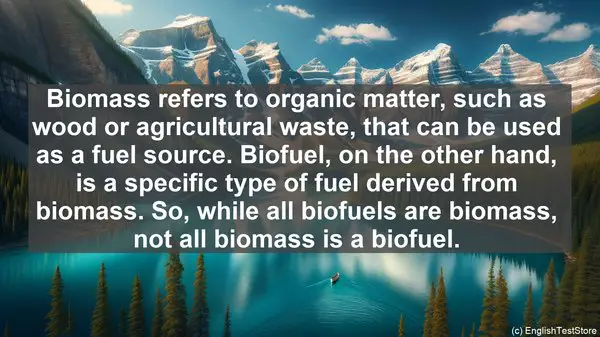Introduction
Renewable energy studies can be fascinating, but it’s not without its challenges. One of the common stumbling blocks is the confusion between certain words. In this lesson, we’ll address the top 10 words that often trip students up. So, let’s dive in!
1. Energy Efficiency vs. Energy Conservation
While both terms are related to energy, they have distinct meanings. Energy efficiency refers to using less energy to perform a specific task, while energy conservation involves reducing overall energy consumption. So, efficiency is about doing more with less, whereas conservation is about using less in general.
2. Renewable vs. Non-Renewable
Renewable energy sources, like solar and wind, are naturally replenished, making them sustainable in the long run. Non-renewable sources, such as fossil fuels, are finite and will eventually run out. Understanding this distinction is crucial when considering the environmental impact of different energy options.
3. Photovoltaic vs. Solar Thermal
Both terms are related to harnessing solar energy, but they represent different technologies. Photovoltaic systems convert sunlight directly into electricity, while solar thermal systems use the sun’s heat to generate power. Each has its applications and advantages, depending on the specific requirements.
4. Grid-Tied vs. Off-Grid
When it comes to renewable energy systems, they can be grid-tied or off-grid. Grid-tied systems are connected to the main power grid, allowing for the exchange of electricity. Off-grid systems, on the other hand, are self-sufficient and not connected to the grid. The choice depends on factors like location and energy needs.
5. Biomass vs. Biofuel
Biomass refers to organic matter, such as wood or agricultural waste, that can be used as a fuel source. Biofuel, on the other hand, is a specific type of fuel derived from biomass. So, while all biofuels are biomass, not all biomass is a biofuel.

6. Geothermal vs. Hydrothermal
Geothermal energy harnesses the heat from the Earth’s core, usually through wells or hot springs. Hydrothermal energy, on the other hand, specifically refers to the heat stored in water bodies, like oceans or hot springs. Geothermal is a broader term, while hydrothermal is more specific.
7. Tidal vs. Wave
Both tidal and wave energy are derived from the ocean, but they have different sources. Tidal energy is generated by the gravitational pull of the moon, causing the rise and fall of tides. Wave energy, as the name suggests, is derived from the motion of waves. Each has its unique challenges and potential.
8. Inverter vs. Converter
In the context of renewable energy systems, both inverters and converters are used to manage electricity. However, their functions differ. An inverter converts DC (direct current) to AC (alternating current), which is the standard form of electricity for most appliances. A converter, on the other hand, can perform various functions, including voltage or frequency conversion.
9. Insolation vs. Irradiance
When studying solar energy, these terms often come up. Insolation refers to the total solar energy received on a given surface, usually expressed in kWh/m²/day. Irradiance, on the other hand, is the instantaneous power per unit area, typically measured in watts per square meter (W/m²). So, insolation is the total energy, while irradiance is the intensity at a specific moment.

10. Net Metering vs. Feed-in Tariff
Both net metering and feed-in tariff are mechanisms to incentivize renewable energy adoption. Net metering allows individuals to sell excess electricity they generate back to the grid, offsetting their consumption. Feed-in tariff, on the other hand, guarantees a fixed payment for every unit of renewable energy generated. The choice between the two depends on factors like policy and individual goals.
